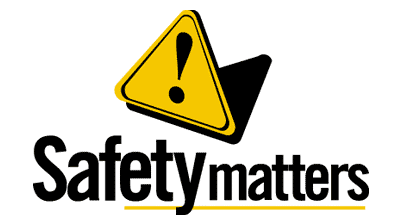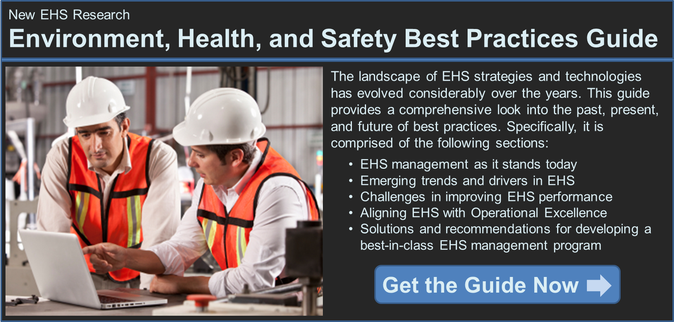It is always amazing to me how many large manufacturing companies still don't use Environment, Health, and Safety (EHS) Software effectively. It usually doesn't matter the industry, leading companies across a broad spectrum of industries have big gaps in the use of this software, including: automotive, aerospace and defense, industrial equipment, electronics, oil and gas, chemicals, life sciences, food and beverage, or consumer packaged goods.
Status Quo in Environment Health and Safety Software
Leading companies today are definitely focused on Environment Health and Safety specifically and Sustainability more broadly, which is a positive thing. Trends in the industry and established best practices show these companies have incorporated Environment Health and Safety issues into high level strategic objectives. Executives take issues around employee safety, OSHA compliance, environmental spills and releases, product stewardship, and more very seriously. Often metrics around these areas are built into management compensation and companies have successfully established reporting structures that drives the importance of these issues all the way down to the grass-roots of the company with site-level leaders that report into responsible corporate managers.
Despite all of these positive trends, the adoption of Environment Health and Safety Software remains remarkably low; both in the overall adoption of the software and in the use of the software among those that have already adopted. Many companies, even those an industry observer would assume takes these issues seriously, does much of the heavy lifting required to effectively manage Environment Health and Safety issues with manual tools. These tools generally includes paper based document management for compliance, spread sheets, email, and home-grown data bases; all of which can create inefficiencies, compliance risks, and maintainability nightmares.
Moving the Dial
In situations like this, where manual tools are the norm, the benefits from adopting automated software tools are often immediate and easily documented. However, for Environmental Health and Safety Software it can be more of a challenge and there are two major challenges we see companies facing today.
First Environment Health and Safety Software does a lot to reduce paper work of current employees, increase visibility, avoid future costs, and reduce the risk profile of the company. Unfortunately, there are not necessarily immediate cost savings in improved operational efficiency or reduced head counts that can be pointed to an a 1 year or 2 year ROI. Rather, changing corporate culture, reducing the OSHA injury frequency rate, and reducing the risk of environmental incident are all benefits enjoyed by companies that adopt Environment Health and Safety software but the benefits can take 5 or 10 years to be fully realized.

The second challenge is one specific to software in the industrial space and promoting the adoption of technology on the shop-floor. For many companies, the actual culture on the shop-floor is not one of safety first, it is get the job done first. Reducing risk, ensuring OSHA compliance, and documenting that processes have been adhered to is not top of mind. In situations like this, it is important to lead by example. Shop floor supervisors and managers need to be proactive and put safety first and follow standard procedures. They themselves need to use Environment Health and Safety software according to best practices, including consistently using the software to record near misses and other incidents. This is what it takes to change culture and also foster the adoption of Environment Health and Safety Software on the shop-floor.
Key Take Aways
Many leading companies have an opportunity to move ahead of their competition with the adoption of Environment Health and Safety Software. Although for a successful deployment companies need to address two key road blocks. First they should realize adopting Environmental Health and Safety Software is a long term investment in the company that is a tool to help reduce the long term risk profile of the company and eliminate future costs associated with high rates of environmental and employee incidents. Second, the shop-floor is a beast of its own and special attention needs to be paid to the culture of every site and management must lead by example in both attitudes around safety and the use of Environmental Health and Safety Software
In future post and research we will examine how successfully adopting Environment Health and Safety (EHS) Software is a key determinant of success. We will also look at the quickly evolving software market in the space and how these software solutions can help support initiatives. If you would like to participate in this research or be notified when it publishes, please share your email with us here at the LNS Research homepage.
